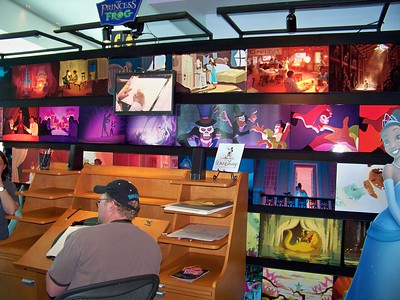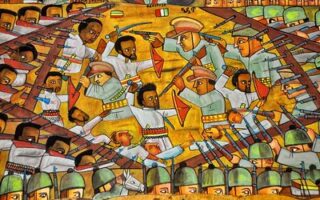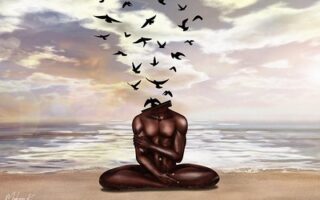Introduction
Animation has been around for hundreds of thousands of years. Animation is simply using the movement of still images to create illusions. The global animation industry is valued to be at $270 billion and growing 8% annually (including animation, visual effects, and gaming). Although the general perceptions of animation are that it is only for children, animation comes in all forms for all ages. Kathleen Kennedy, a co-producer for the English version film Ponyo, beautifully stated that, “sophisticated stories coupled with powerful imaginations and beautiful animation appeals to everyone”. The stories told in animation can teach audiences many lessons. The underlying theme of the paper will be analyzing the encoded and decoded messages displayed throughout the film. This paper will compare two animation movies and the various types of historical representation that can be learned from the movies. The first movie is The Princess and the Frog, and the second movie is Kirikou and the Sorceress.
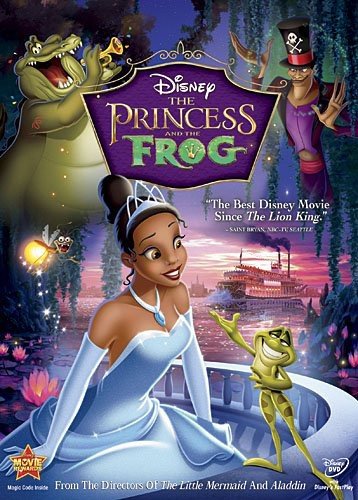
Princess and the Frog movie cover 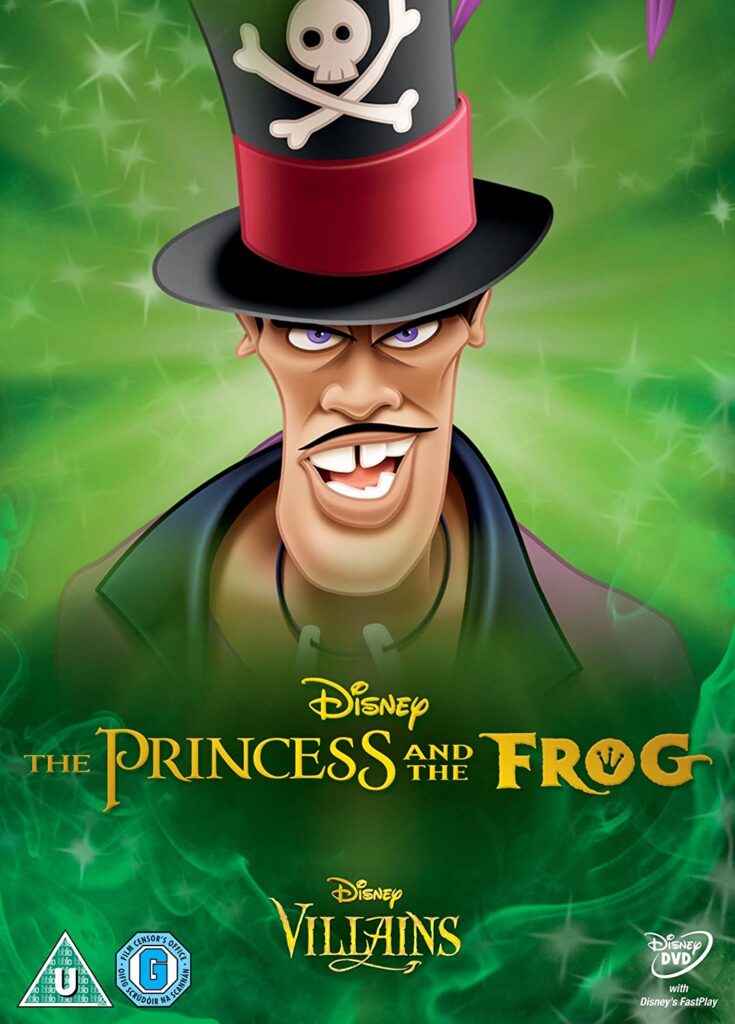
Dr. Facilier 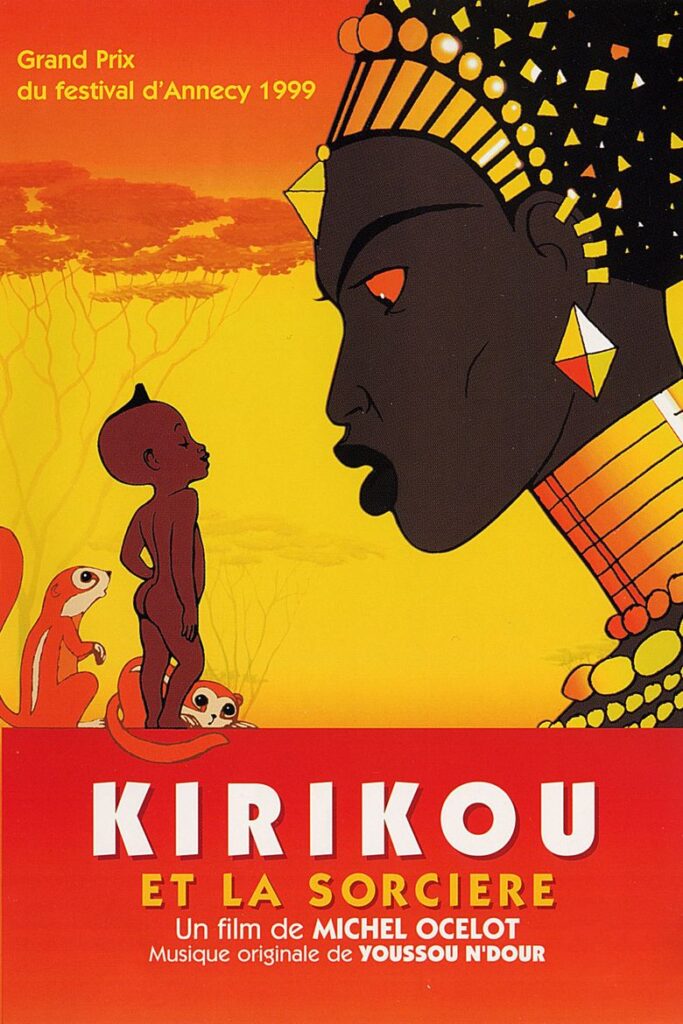
Kirikou and the Sorceress movie cover 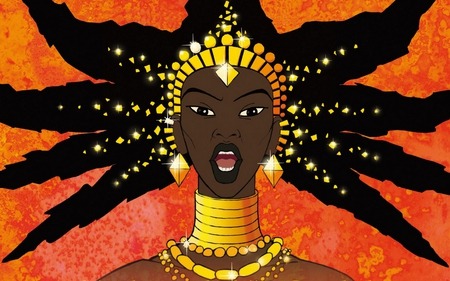
Karaba
The Princess and the Frog
The Princess and the Frog was set in the 1920’s. This time period in American history was called the Jazz Age and/or the Roaring 20’s. During this flamboyant time in American history, jazz was prevalent in both Black and White communities. By having the setting in New Orleans, the creators can include more diversity among their characters because of the cultural melting pot New Orleans has become. By knowing the historical background of New Orleans, the audience decodes this time and place as a happy fun-loving place in the south, instead of the nasty Jim Crows laws during this time. the creators are historically inaccurate and colorblind to the Jim Crows laws and racism during this time. By this encoded message of colorblindness, audiences are left to decode that there were no racial tensions and inequalities during this time, when in fact it still existed. Jim Crow Laws were laws that were created to enforce racial segregation from the 1870’s until the 1960’s. These laws across the south divided public spaces, such as restrooms, movie theaters, and public schools, by having “whites only” and “colored only” signs in the entryways. If Blacks disobeyed any facility not of their own, they could face arrest, beatings, loss of employment, or lynching. Blacks had to address whites as the authority, despite their age or socio-economic class, by addressing them as Mister or Ma’am. Jim Crow Laws stayed intact until the 1960’s.
Jim Crow Laws began dismantling during the Civil Right Movement. During this historic time for civil and racial justice, the Civil Rights Movement was in full swing. KhanAcademy defines the Civil Rights Movement as, “an umbrella term for the many varieties of activism that sought to secure full political, social, and economic rights for African Americans in the period from 1946 to 1968”. The most notable way the unfair treatment against Blacks that relates to The Princess and the Frog is the correlation with Plessy v. Ferguson and the Brown v. Board of Education of Topeka. New Orleans was home to Plessy v. Ferguson, a Supreme Court case that, “ruled that Louisiana’s segregation law did not violate the Fourteenth Amendment so long as separate accommodations for whites and blacks were equal” (Zinkel, 2019). This was just one lawsuit that impacted the daily lives of Blacks and people of color. During this time, the idea of Jim Crow and segregation were in full swing of spreading across the world, especially in former western colonies. In Africa, colonizers were influenced and adopted many of the segregation techniques in America, calling it the apartheid, which means “apartness”. The apartheid began in 1948 and it created, “a culture of institutionalized racism in South Africa…legislation was passed that discriminated against and persecuted the non-white population” (Zinkel, 2019). Although the majority of the population were non-whites (around 91.6%), white South Africans held most of the power in the economy and government.
The idea of darker skin equating to evil is not a new concept. This idea can be traced back to slavery. As African slaves were seen as savages and feral from white civilization. The character, Dr. Facilier, symbolizes the Black Brutal Buck. Donald Bogle defines the buck as, “always big, baadddd niggers, over sexed and savage, violent and frenzied as they lust for white flesh…that the white woman was the ultimate in female desirability, herself a symbol of white pride, power, and beauty” (Bogle, 2014). The portrayal of Africans as the buck was also present in European propaganda. By portraying the Black man as savaged like, western colonizers used this technique to support the spread of colonization in Africa. The main three goals of colonialism were called the Three C’s, commerce, Christianity, and civilization. In order to save the “savages”, white European men had to civilize them, thus becoming the white savior/hero. Also known as the White Hero/Savior Complex. Another way this decoded message of the buck was brought about by westerners was from the Martial Races myth. This myth was the idea that there were African people who are fighters and inherently martial or police-like. This myth was mostly used by the British who used this idea to establish some groups as police and forced them to become more military like, consequently decentralizing those societies.
On Disney’s website, his character description is, “Facilier and his sidekick shadows yearn to spread darkness and corruption and become fantastically wealthy in the process”. In order for him to become wealthy, he uses dark voodoo magic to gain wealth and power. Presently, voodoo is associated with dark magic and a dark religion. But historically, voodoo was developed as a single religion by different ethnic groups of enslaved Africans. This new religion brought slaves together, and scared Europeans, “who have a massive fear of anything African, to suppress and distort a legitimate and unique religion that flourished among their enslaved Africans…unfortunately, the public’s perception of voodoo rites and rituals seems often to point to the evil or malicious side of things” (African Voodoo, 2018). Disney reinforces the negative connotation of voodoo, by having the villain use it for evil. The Shadow Man uses his voodoo magic to gain power, wealth, and pride by controlling Big Daddy and his daughter.
Kirikou and the Sorceress
Kirikou and the Sorceress synopsis: “A small voice can be heard in the womb of a pregnant woman: “Mother, bring me into the world!” “A child who can speak from inside of his mother can bring himself into the world”, answers the mother. This is how tiny Kirikou is born, in an African village on which Karaba the Sorceress has cast a spell. But as he comes forth from his mother’s womb, Kirikou is determined to rid the village of her curse and understand the cause of her wickedness. After fabulous adventures, Kirikou reaches the forbidden mountain…” (Ocelot). Kirikou and the Sorceress was produced by Les Armateur, a French TV, series production, and feature film company founded in 1994. In 1998 Michel Ocelot created the African story and it was publicized through word of mouth due to lack of funding. The film was a great success, as it won over eleven international awards. Just as in the Princess and the Frog, Karaba is said to have put an evil curse on the African village, where the well is dried up, she takes the women’s gold, and the men have been eaten by her. Although the two movies contrast very differently, they hold many similarities that could be decoded for future teachings and references. There is a lack of paternal presence for the main characters. They are talked about, but have very little screen time. Instead the mother is present and very involved in inspiring the main character. Food also plays an important role in both films, gumbo for New Orleans and yams in Africa.
Karaba, the sorceress, also has supernatural powers and many similarities like Dr. Facilier. Karaba’s sorcery was used to enhance her role as the villain. She used fear and manipulation against the protagonist and other characters. And their weakness also is tied to their powers. Dr. Faciler had a talisman that if destroyed, he was also destroyed. And for Kababa, if the thorn in her back was taken out, she would be in great pain. The decoded message in these two items suggest that by destroying the source of power, one will be free from the “darkness”. Knowing that white creators were behind these two movies, one can suggest their feelings toward magic and voodoo. In post colonized countries, Christianity was the religion spread by missionaries. Attitudes toward voodoo and magic from a Christianity perspective are examples of colonial misunderstanding seen in these two movies. When the majority of movies destroy the magic from the villains, this supports the western thinking towards the supernatural. Eventually, this becomes the superior and stigma towards the supernatural and shifts the cultural importance towards a belief of western influences of a monolithic religion.
Another decoded message in Kirikou and the Sorceress is the hidden message of sitting on a man. Sitting on a man consisted of women boycotting, striking, or resisting to protect their fellow women. Before colonization enforced their values and beliefs of the submissive Victorian woman among the Igbo, women came second to men in power and influence (Allen, 1982). Yet, Kababa’s form of sitting on a man is in retaliation to gang rape. Kirikou and the Sorceress has a hidden message of the mistreatment of women and rape (Speaks, 2017). When Kirikou ask, why is Kababa so mean, his grandfather, the wise and all-knowing responds, with:
“she is in pain, she suffers day and night, and it never stops. Somebody drove a poisonous thorn deep into Karaba spine. She has already had at least some of the terrible pain when some men sees there, and another man drove in the thorn, she would not go through that again”.
As the grandfather tells the story of why Kababa is angry, the movie shifts to a reddish and dark undertone of lighting and colors. A group of men with claws and horns in a circle loom over something, assuming, they are surrounding Kababa. The decoded message her is that Kababa was a victim of a gang rape. And as a result, she was injured with a thorn left in her spine. This thorn is the source of her power, but it is also a constant reminder of her rape. This changed her attitude toward all men and her hatred of them was sparked. Kababa uses her magic to turn men into robot like objects (fetishes). Kababa surrounds herself with these fetishes as a way to dominate them. I argue this is a form of her sitting on a man. By taking away their physical appearance, they can no longer hurt her, but they also must submit to her will.
Only Kirikou is able to free Kababa from her thorn because of his curiosity on her suffering and stating that he is not like other men who will treat her like a servant. Kirikou took the place of how other women were supposed to defend Kababa, thus explaining her despise toward women. Kirikou is able to free Kababa from the symbolic thorn of rape and pain. Kirikou frees her from her suffering and Kababa says, “I am not suffering anymore. No more agony and no more pain. I am free..I am myself again!”
Conclusion
Colonialism has impacted every part of the social and cultural life of its colonized. By being the superior power, they control all forms of economic, social, and historical knowledge. One effect of colonialism is the way European beliefs have influenced the media industry. This paper compared two movies, one from America and another from France. Although these two countries are very different, they both have history of colonialism. This has influenced how the cultural standards has shifted to their European ideals. The movies, the Princess and the Frog and Kirikou and the Sorceress, have decoded messages that were influenced but shifted by European colonizers. One being the stigma around voodoo. Compared to how it is viewed in Africa and Europe, these negative connotations of voodoo are seen throughout society, especially in films. Both villains possess magical powers that initiate fear among their people. Another influence of colonization were Jim Crow Laws and the Apartheid. Finally, the decoded message of the Black Buck and comparing them to the martial myths and the African form of resistance, ‘sitting on a man’. Movies, especially in the form of animation, tell many stories that if dug deeper, tell many historical lessons for all ages to learn and explore.
References
African Voodoo. (2018, November 10). Retrieved from https://africanholocaust.net/voodoo/
Allen, J. V. (1982). “Sitting on a Man” Colonialism and the Lost Political Institutions of Igbo Women. Canadian Journal of African Studies, 6(2), 165–181. doi: 10.14321/jwestafrihist.3.2.0173
Auréjac, F. (n.d.). Michel Ocelot – Site Officiel, Official Website. Retrieved December 2019, from https://www.michelocelot.fr/#kirikou-and-the-sorceress.
Bogle. D. (2004). Toms, coons, mulattoes, mammies, & bucks: An interpretive history of blacks in American films. New York, NY: The Continuum International Publishing Group Inc.
Jim Crow. (n.d.). Retrieved from https://www.khanacademy.org/humanities/us-history/the-gilded-age/south-after-civil-war/a/jim-crow
Kirikou and the Sorceress. (2015, February 15). Retrieved December 2019, from https://www.youtube.com/watch?v=6bEqeCkueGg&list=PLZs0gQed9tMRv8vgh2oiV1W6M5kBz7LG4&index=8.
Speaks, M. (2017, March 11). Karaba la sorcière aurait-elle été violée ? Retrieved December 2019, from https://www.nofi.media/2017/03/karaba-la-sorciere-aurait-elle-ete-violee/36785.
The Princess and the Frog. (n.d.). Retrieved from https://disney.fandom.com/wiki/The_Princess_and_the_Frog
The Princess and the Frog – Characters. (n.d.). Retrieved from https://movies.disney.com/the-princess-and-the-frog/characters
Woods, L. (2019, January 7). Global Animation, VFX & Games Markets, 2018-2020: Total Value of Global Animation Industry is Projected to Reach US$ 270 Billion. Retrieved December 2019, from https://www.prnewswire.com/news-releases/global-animation-vfx–games-markets-2018-2020-total-value-of-global-animation-industry-is-projected-to-reach-us-270-billion-300773718.html.
Zinkel, B. (2019). Apartheid and Jim Crow: Drawing Lessons from South Africa’s Truth and Reconciliation. Journal of Dispute Resolution, 2019(1), 229–255. Retrieved from https://search.ebscohost.com/login.aspx?direct=true&AuthType=ip,shib&db=lgs&AN=136779407&site=eds-live&scope=site
